In the realm of stock market prediction, mastering the utilization of Keltner Channels can significantly enhance one's trading acumen.
The interplay between volatility bands, moving averages, and trend analysis forms the cornerstone of this methodology.
However, the nuances lie in the application of these principles and the finesse with which traders adjust their strategies to market conditions.
As we delve into the realm of 10 expert tips for leveraging Keltner Channels effectively, a world of refined stock prediction techniques awaits, offering traders a competitive edge in navigating the complexities of the financial markets.
Understanding Keltner Channel Basics
Keltner Channels, essential tools in technical analysis, comprise three distinct lines that play a crucial role in assessing market volatility and predicting potential price movements.
The middle line, often a 20-period Exponential Moving Average (EMA), serves as a reference point for price action. Meanwhile, the upper band, calculated as EMA plus twice the Average True Range (ATR), and the lower band, obtained by subtracting twice the ATR from the EMA, dynamically adjust based on market volatility.
These bands offer traders dynamic levels of support and resistance, aiding in determining potential entry and exit points. Moreover, Keltner Channels assist in identifying overbought and oversold conditions, indicating potential reversals in price trends.
Setting Up Keltner Channels Correctly
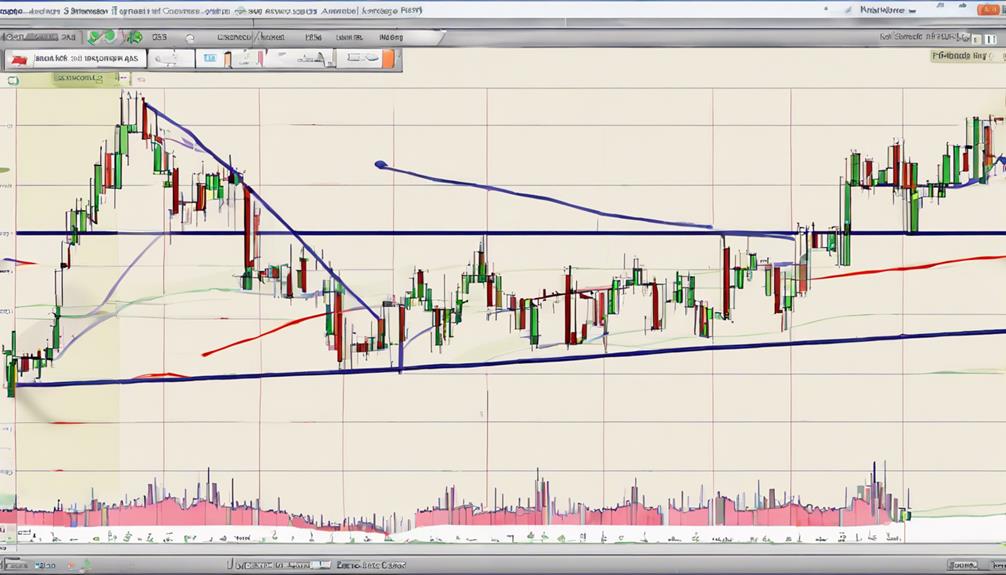
To establish a robust technical framework for assessing market volatility and predicting potential price movements, it is essential to accurately configure the components of the Keltner Channels. Setting up Keltner Channels correctly involves utilizing a 20-period Exponential Moving Average (EMA) as the middle line to identify trends effectively.
The upper and lower bands, serving as dynamic support and resistance levels, are determined by applying a 2 * Average True Range (ATR) multiplier. It is crucial to adjust the ATR multiplier according to market conditions to capture price movements accurately.
Selecting an appropriate EMA period ensures that the Keltner Channels remain responsive to price changes, aiding in the prediction of potential breakouts and trend reversals in stocks. By adhering to these guidelines and configuring the Keltner Channels accurately, traders and investors can enhance their technical analysis capabilities and make informed decisions based on the insights provided by this powerful tool.
Interpreting Keltner Channel Signals
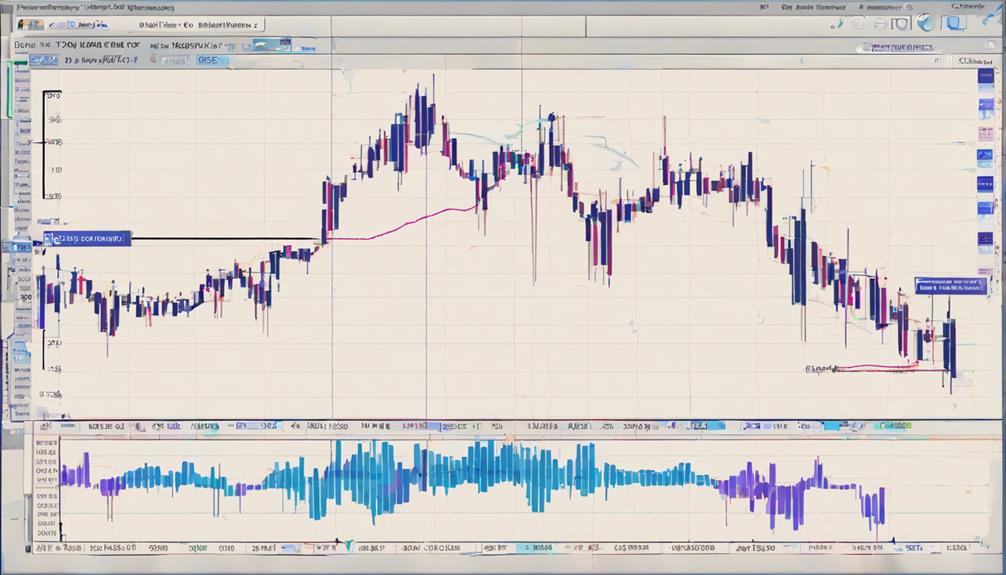
Building on the foundational understanding of Keltner Channels and their correct setup, interpreting Keltner Channel signals involves discerning key breakout and reversal indicators to forecast potential stock movements effectively.
When analyzing Keltner Channel signals, traders should focus on the following:
- Breakouts: Keltner Channel signals often include breakouts when the price touches or crosses the upper or lower bands. An upward breakout above the upper band suggests a potential uptrend, while a downward breakout below the lower band indicates a potential downtrend.
- Reversal Signals: Reversal signals can be identified when prices close outside the Keltner Channel boundaries. To enhance the confirmation of reversal signals, observing price rejection at key support or resistance levels is crucial.
- Price Behavior and Prediction: Monitoring price behavior relative to the Keltner Channel can provide valuable insights into potential stock movements. Understanding how prices interact with the Keltner Channel boundaries can aid in predicting future price trends and possible entry or exit points for trades.
Identifying Market Trends With Keltner Channels
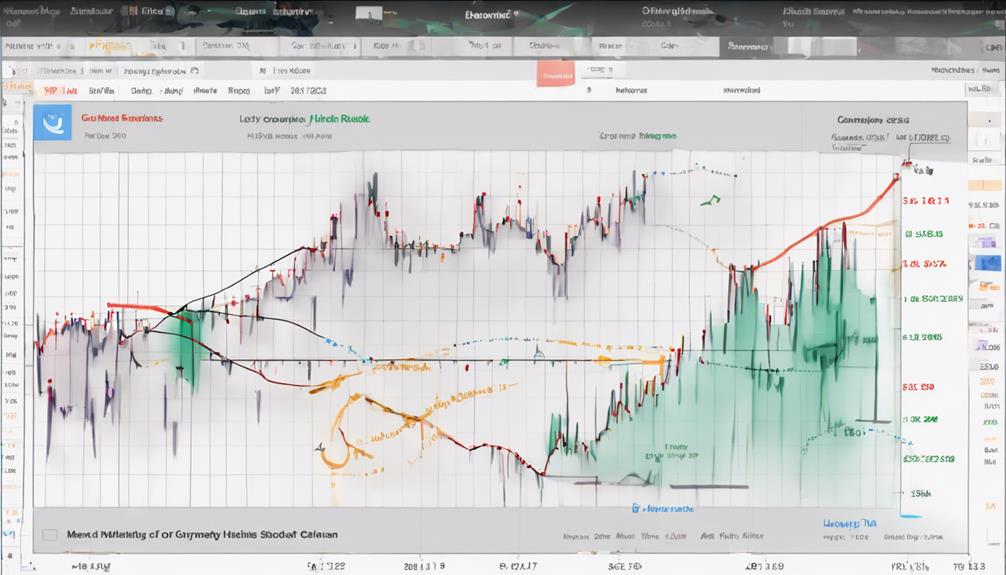
Utilizing the middle line of Keltner Channels as a reliable trend indicator facilitates the identification of market trends with precision and clarity. The upper and lower bands of the Keltner Channels serve as dynamic levels of support and resistance, aiding traders in recognizing trending markets.
By monitoring price behavior concerning these bands, traders can effectively identify the prevailing trend. Additionally, trend confirmation is essential and can be achieved by analyzing how prices move relative to the channel boundaries. This analysis helps traders gauge the strength and direction of market trends, enabling informed decision-making.
Traders rely on Keltner Channels to not only identify trends but also to understand the momentum behind them. The ability to interpret market trends accurately is crucial in devising successful trading strategies and maximizing profits. By incorporating Keltner Channels into their analysis, traders can enhance their understanding of market dynamics and make well-informed decisions.
Utilizing Keltner Channels for Swing Trading
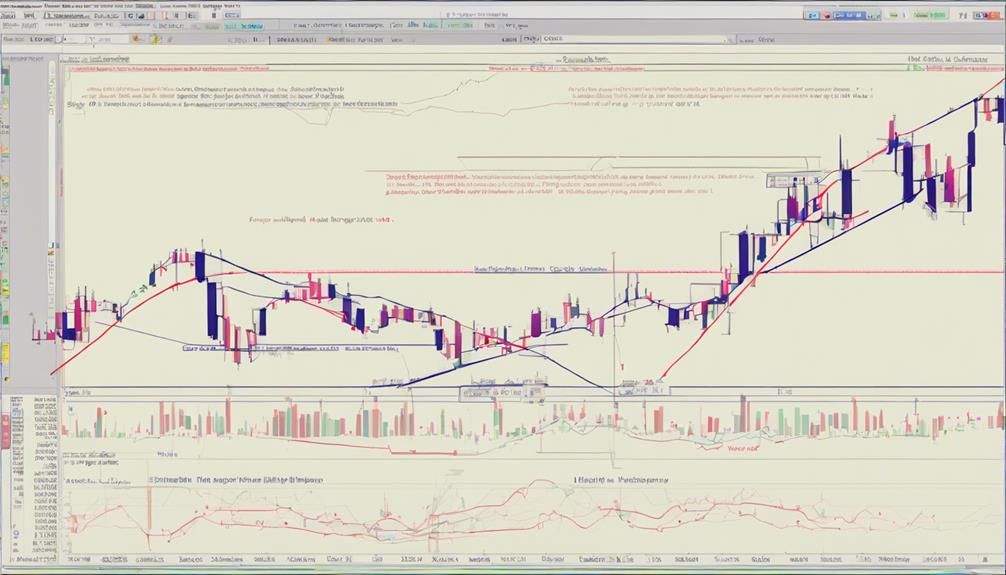
Swing traders leverage Keltner Channels as a strategic tool for identifying opportune entry and exit points based on price volatility. When utilizing Keltner Channels for swing trading, several key aspects come into play:
- Dynamic Support and Resistance Levels: Swing traders use the upper and lower channel lines as dynamic support and resistance levels. These levels help traders make informed decisions on when to enter or exit trades based on the price action within the channels.
- Market Sentiment Analysis: Monitoring price movements in relation to the Keltner Channels can provide valuable insights into shifts in market sentiment. This analysis is crucial for swing traders looking to capitalize on opportunities arising from changing market dynamics.
- Risk Assessment and Trend Reversals: The channel width, which reflects the level of price volatility, aids swing traders in assessing risk. Additionally, by incorporating Keltner Channels into their analysis, traders can better anticipate potential trend reversals and adjust their strategies accordingly to optimize their trading outcomes.
Fine-Tuning Keltner Channel Strategies
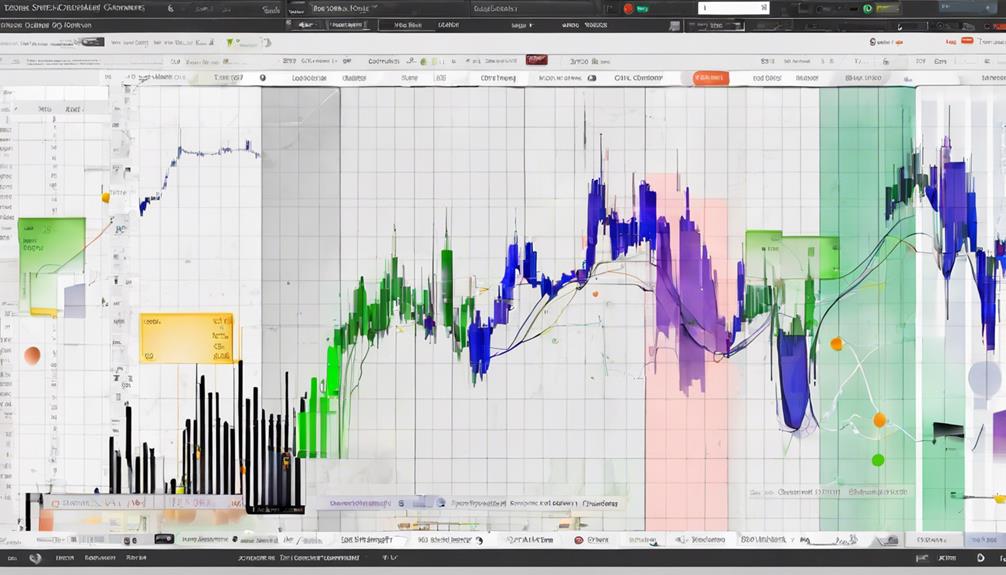
To enhance the precision and effectiveness of Keltner Channel strategies, strategic adjustments tailored to specific stocks or timeframes can be instrumental. Fine-tuning Keltner Channel settings involves optimizing parameters such as the period and multiplier values to better suit the characteristics of individual stocks or the chosen timeframe. Backtesting different configurations is crucial in determining which settings work best for the desired trading approach.
Additionally, combining Keltner Channels with other technical indicators, such as moving averages or the Relative Strength Index (RSI), can provide valuable confirmation signals for more robust trading decisions.
Analyzing historical price action alongside Keltner Channels helps in identifying optimal entry and exit points. By observing how the price interacts with the channel boundaries in the past, traders can fine-tune their strategies for improved accuracy. Experimenting with various multiplier values is also essential to adapt Keltner Channels to changing market conditions and ensure their continued relevance in different scenarios.
Avoiding Common Mistakes With Keltner Channels
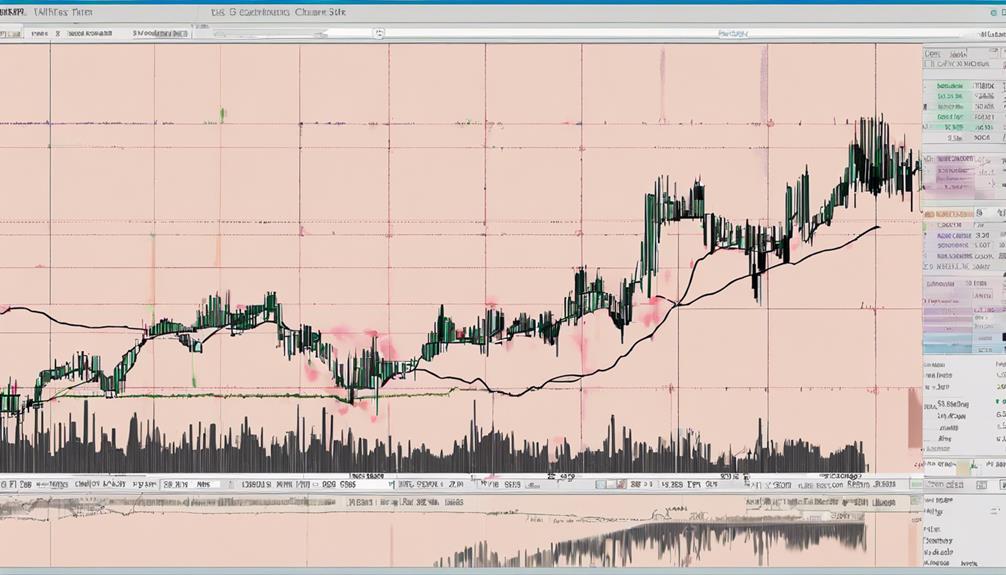
When incorporating Keltner Channels into trading strategies, it is imperative to steer clear of common mistakes that could potentially lead to unfavorable outcomes.
- Avoid relying solely on upper band touches: While upper band touches can indicate potential selling opportunities, solely relying on this signal may result in missed profit-taking chances or premature exits. It is essential to combine this indicator with other aspects for a comprehensive analysis.
- Consider market conditions and trend strength: Market conditions and trend strength play a crucial role in interpreting Keltner Channel signals. Prices can remain overbought or oversold for extended periods, especially in strong trends. Understanding these factors can help in avoiding false signals and making more informed trading decisions.
- Utilize other technical indicators and price action analysis: To enhance prediction accuracy, it is advisable to combine Keltner Channels with other technical indicators. Additionally, conducting price action analysis can help validate signals generated by Keltner Channels, providing a more robust basis for trading decisions.
Combining Keltner Channels With Other Indicators
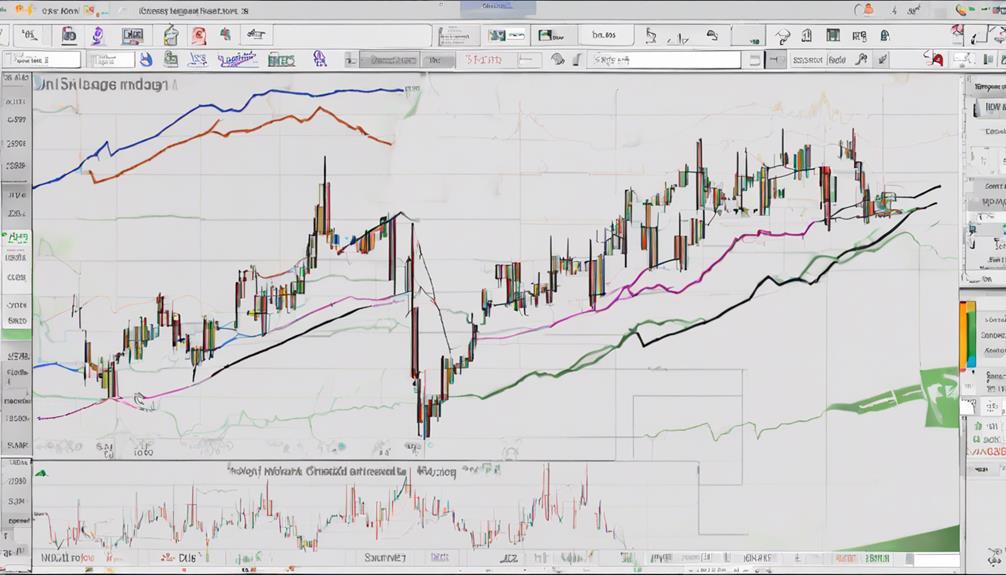
Integrating multiple indicators with Keltner Channels can provide a comprehensive view of market conditions, enhancing predictive accuracy and reducing false signals.
By combining Keltner Channels with oscillators like RSI and MACD, traders can validate signals and make more informed trading decisions.
This synergistic approach leverages the strengths of each indicator to improve overall strategy effectiveness.
Indicator Synergy Benefits
By combining Keltner Channels with momentum indicators like RSI or MACD, traders can enhance trend confirmation and improve signal accuracy for more informed decision-making in the stock market. When synergizing Keltner Channels with other indicators, traders benefit from a more comprehensive market analysis and increased reliability in their trading strategies.
The following are key benefits of combining Keltner Channels with other indicators:
- Enhanced trend confirmation and signal accuracy.
- Comprehensive market analysis utilizing trend indicators like ADX or moving averages.
- Improved identification of potential price movements and trend reversals by analyzing candlestick patterns alongside Keltner Channels.
Enhancing Predictive Accuracy
To optimize predictive accuracy in stock market analysis, the strategic integration of Keltner Channels with various complementary indicators offers traders a robust framework for informed decision-making and enhanced forecasting capabilities.
Combining Keltner Channels with RSI can help confirm overbought or oversold conditions, enhancing trading signals. Additionally, using MACD alongside Keltner Channels can strengthen signals and provide further confirmation for potential stock movements.
The incorporation of Bollinger Bands with Keltner Channels provides a comprehensive view of volatility and price levels, ultimately improving predictive accuracy. Furthermore, adding moving averages to the analysis aids in identifying trends, complementing Keltner Channels' signals for better stock prediction outcomes.
Utilizing candlestick patterns in conjunction with Keltner Channels enables traders to anticipate potential reversals or breakout points with greater precision.
Backtesting Keltner Channel Predictions
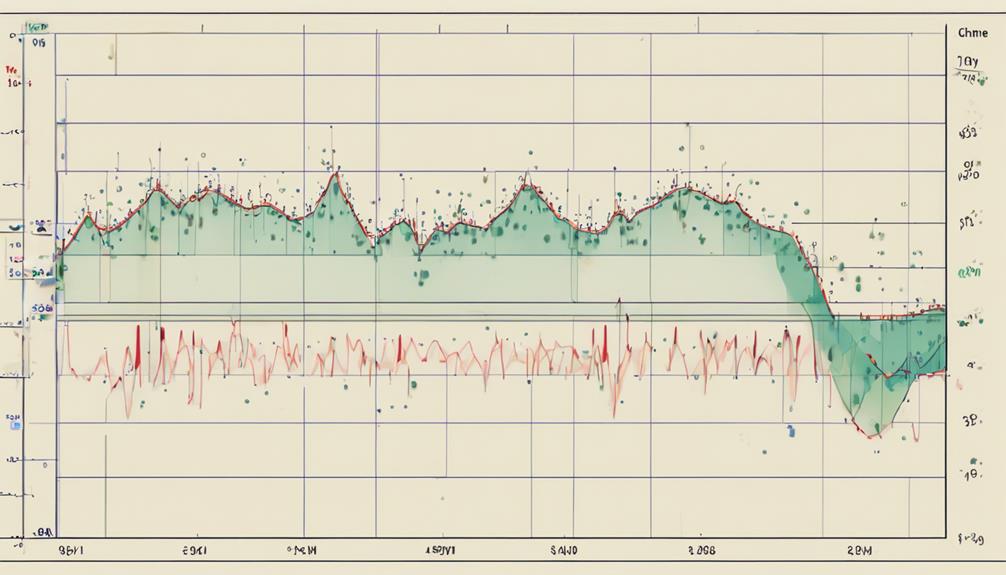
Analyzing historical data is essential in evaluating the efficacy of Keltner Channel predictions.
By comparing performance against benchmarks, traders can gauge the predictive accuracy of Keltner Channels.
Adjusting trading strategies based on backtesting results can enhance the overall effectiveness of utilizing Keltner Channels for stock predictions.
Historical Data Analysis
How can historical data analysis enhance the evaluation of Keltner Channel predictions in stock market forecasting?
- Assessing Accuracy: Backtesting historical data with Keltner Channels allows traders to determine the accuracy of past predictions, providing insights into the indicator's performance.
- Enhancing Trading Strategies: Analyzing past signals generated by Keltner Channels helps refine trading strategies by understanding how well the indicator predicted stock movements in different scenarios.
- Improving Decision-making: By comparing actual price movements with Keltner Channel signals, traders can make more informed decisions based on the historical data analysis, increasing the reliability of their trading actions.
Performance Comparison With Benchmarks
When comparing the performance of Keltner Channel predictions against benchmarks through backtesting, a notable average win rate of 28% was observed. The analysis revealed tendencies for false signals and inconsistency across different settings, indicating potential challenges in relying solely on Keltner Channels for stock predictions.
Moreover, testing on various timeframes showed low success rates and a lag behind price movements, suggesting a possible limitation of the strategy in capturing rapid market changes. Strategies centered on Keltner Channels exhibited mixed performance on specific stocks during backtesting, emphasizing the need for further refinement.
Utilizing TrendSpider's AI-powered platform could potentially enhance the effectiveness of strategies involving Keltner Channel predictions by offering advanced analytical tools and insights.
Adjusting Strategy Based on Results
Upon reviewing the results from backtesting Keltner Channel predictions, it becomes evident that strategic adjustments are imperative for enhancing predictive accuracy and optimizing trading decisions.
Key Adjustments for Enhanced Strategy Effectiveness:
- Refine Entry and Exit Points: Analyze backtesting data to pinpoint areas where entry and exit decisions can be improved based on Keltner Channel signals.
- Optimize Settings and Parameters: Adjust the Keltner Channel parameters such as the length of the moving average and multiplier to enhance the accuracy of predictions.
- Continuous Monitoring for Optimal Performance: Regularly monitor the backtesting results to adapt and fine-tune the strategy for improved performance in predicting stock movements.
Enhancing Stock Prediction Accuracy With Keltner Channels
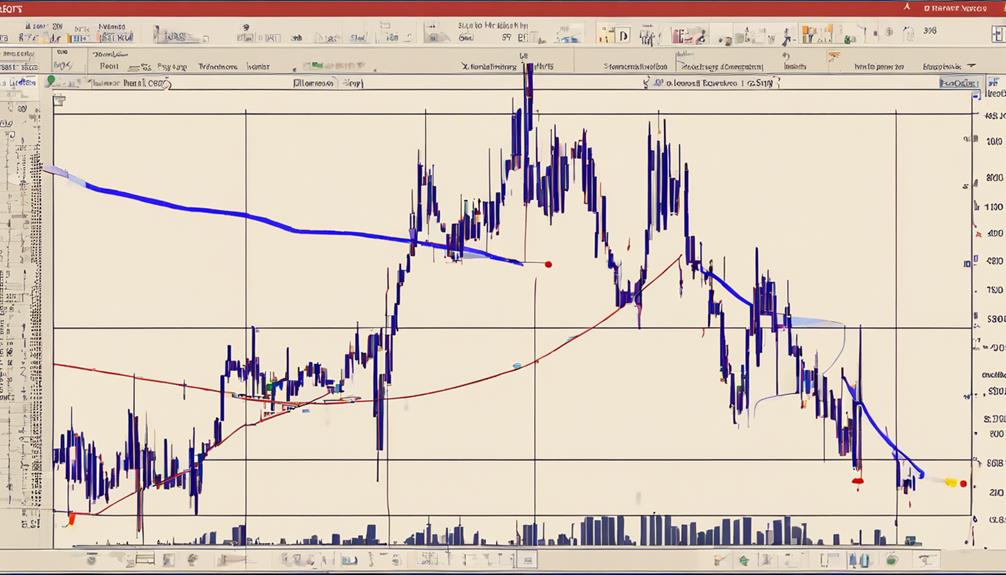
Enhancing stock prediction accuracy can be achieved through strategic utilization of Keltner Channels in conjunction with complementary technical indicators. Keltner Channels help identify price trends and potential breakouts accurately, providing valuable insights into the market sentiment.
To enhance prediction accuracy, it is essential to combine Keltner Channels with other technical indicators for confirmation. Monitoring price movements outside the Keltner Channel boundaries can signal potential shifts in stock direction, guiding trading decisions effectively.
Additionally, incorporating candlestick patterns into the analysis can further improve the precision of stock predictions by offering additional confirmation signals. Adjusting the Keltner Channel settings based on stock volatility and historical price movements is crucial for tailoring the tool to specific market conditions, thereby increasing the accuracy of predictions.
How Can Keltner Channels be Used to Predict Stock Trends and Manage Risks?
Keltner channels are a valuable tool for predicting stock trends and managing risks. By using keltner channel risk strategies, traders can identify potential price breakouts and make more informed decisions about when to buy or sell stocks. These channels help to establish clear support and resistance levels, allowing for more effective risk management.
Frequently Asked Questions
What Is the Best Strategy for the Keltner Channel?
The best strategy for the Keltner Channel involves combining it with complementary technical indicators like RSI and MACD for signal confirmation. Integrating candlestick patterns and adjusting parameters can enhance prediction accuracy. Consider market conditions for a comprehensive approach.
Is Keltner Channel Strategy Profitable?
The profitability of the Keltner Channel strategy is subject to mixed results due to its tendency for false signals and lagging behind price movements. Optimal settings and rigorous testing are essential for enhancing its effectiveness.
What Is the Success Rate of the Keltner Channel?
The success rate of the Keltner Channel in isolation is limited, as historical data analysis shows an average win rate of approximately 28%. It often generates false signals and lagging indicators, requiring caution and supplementary analysis.
How Accurate Are Keltner Channels?
Keltner Channels, despite their potential utility, exhibit low accuracy in predicting stock movements. This is evidenced by a 28% win rate on average and a tendency to produce false signals, making their reliability questionable for traders.
Conclusion
In conclusion, the utilization of Keltner Channels in predicting stocks offers traders a valuable tool for assessing market trends and volatility. By employing proper settings, interpreting signals accurately, and combining with other indicators, traders can enhance their stock prediction accuracy.
Backtesting predictions can further refine strategies for successful trading outcomes. The ability to adapt to market conditions and avoid common mistakes ensures a systematic approach to maximizing profits and minimizing risks in stock trading.
